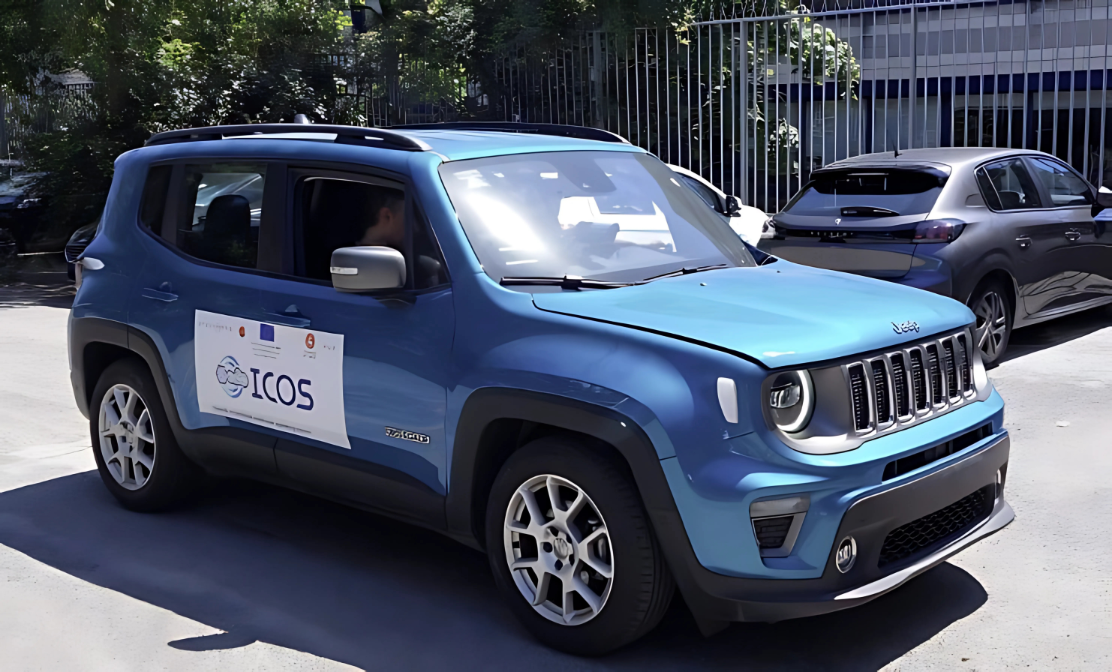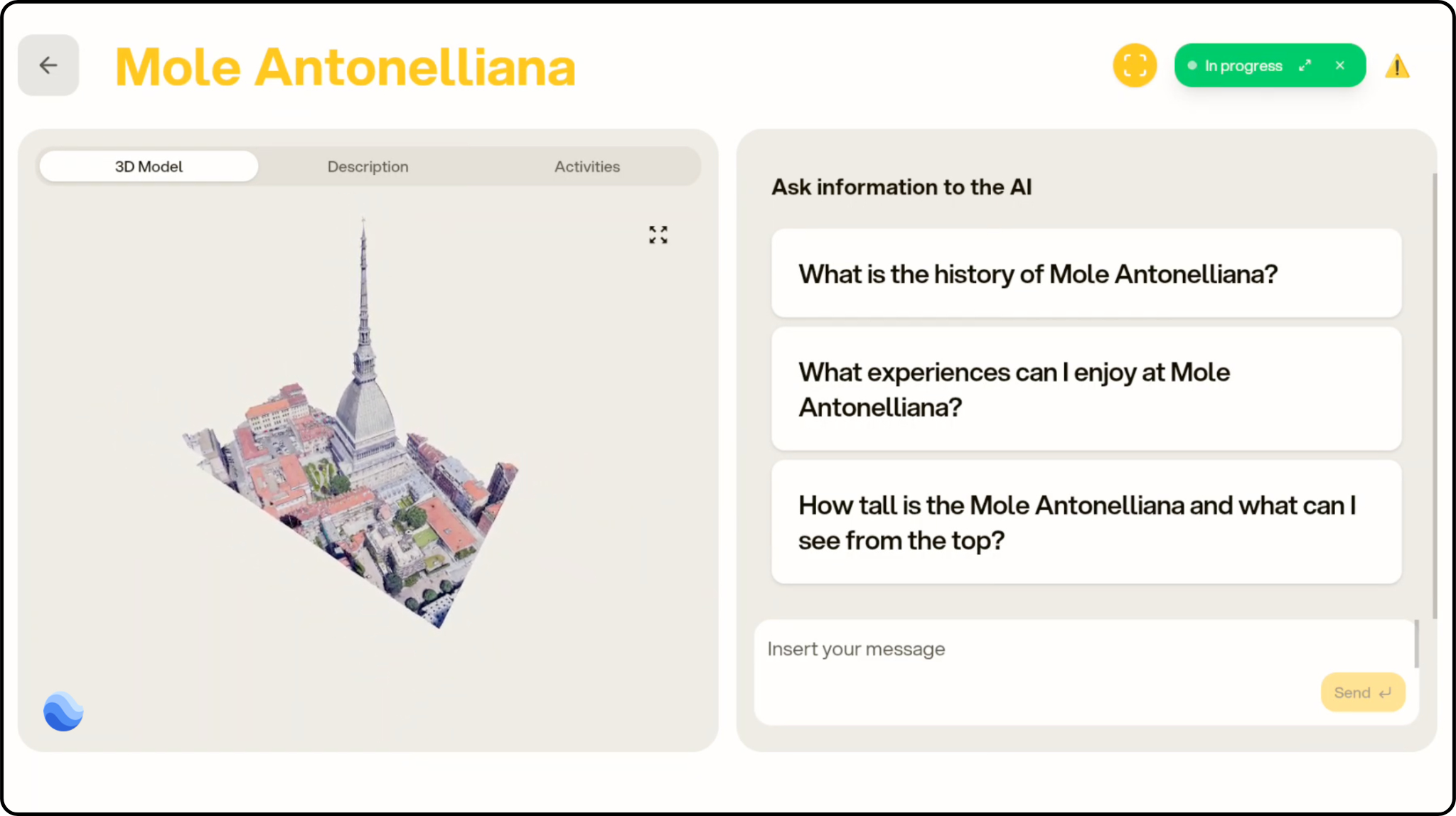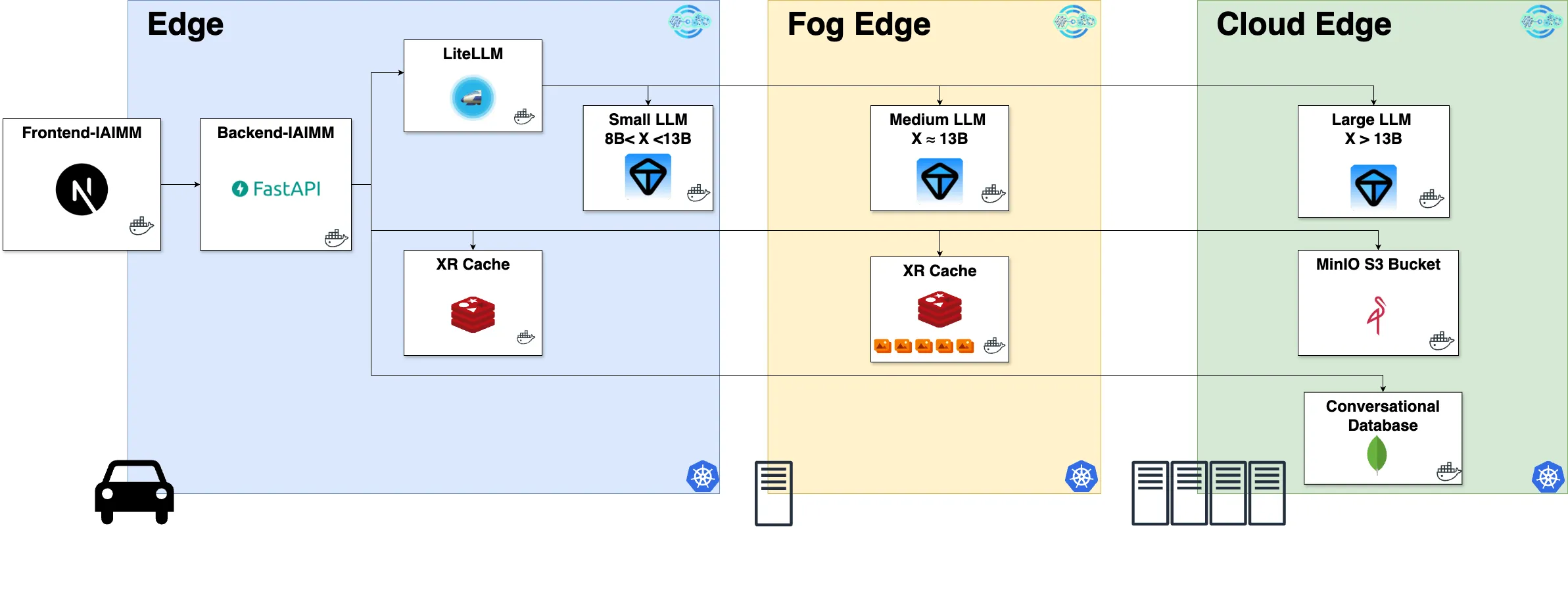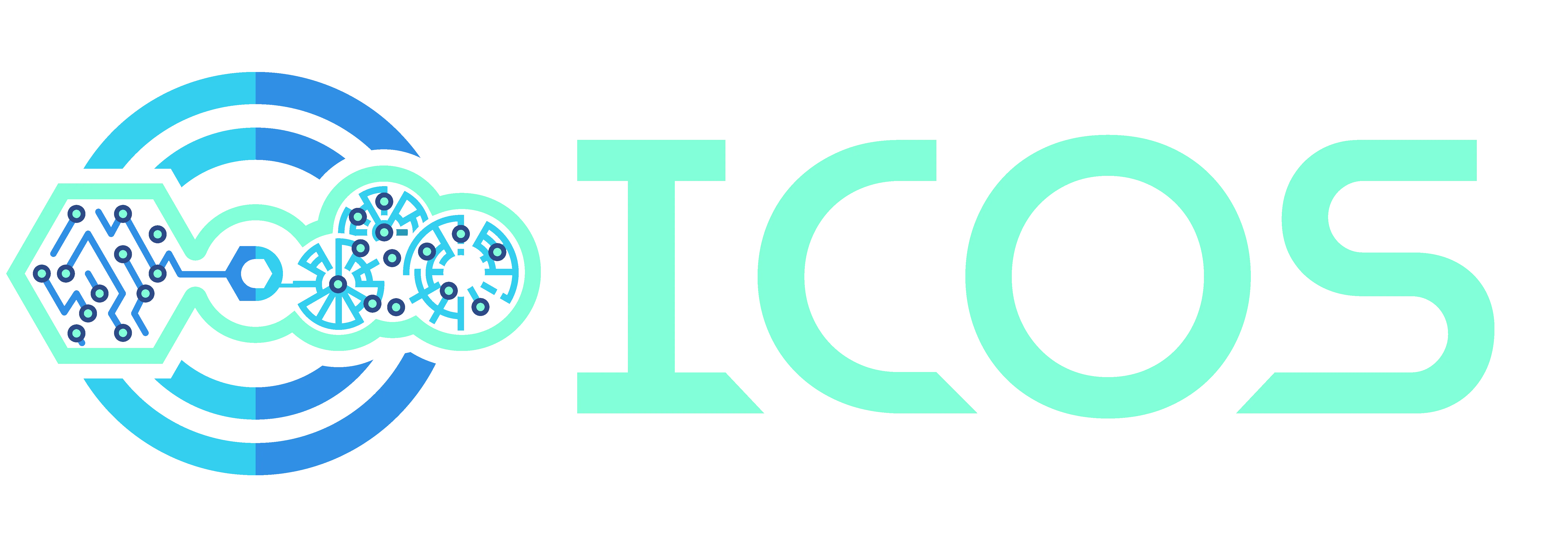In-car Advanced Infotainment and Multimedia Management system
Use case showcases a next-generation in-car infotainment experience for tourism. The IAIMM application combines agentic, LLM-based guidance with immersive media to generate routes based on user preferences and suggest points of interest, support shared viewing sessions, and keep services available even when connectivity is weak. ICOS enables seamless operation across the in-car edge, edge node, and cloud continuum, with dynamic placement of services and policy-driven automation to preserve QoS (Quality Of Service) and QoE (Quality Of Experience).
Challenges
Tourism assistance in motion requires fast responses and fluid media playback. Latency must remain low while vehicles move through areas with heterogeneous connectivity.
Conversation data and user settings must be protected end-to-end, with secure storage and the ability to react when a hosting node becomes untrusted.
The system must keep working offline or with intermittent networks by leveraging in-car edge/edge node execution, local caches, and automatic relocation of services.
Benefits
- Lower perceived latency for in-car guidance and media
- Service continuity through offline/near-edge execution
- Policy-driven orchestration across in-car edge, edge node, and cloud
- Improved security and privacy for conversational data
- Shared experiences via integrated video rooms
Infrastructure and devices
The IAIMM implementation consists of three constituent parts:
- In-car edge
- Edge node
- Cloud
In-car edge. The in-vehicle Car PC runs the IAIMM app Frontend (NextJS) on the car HMI (tablet) and the Backend (FastAPI) with business logic. A lightweight LLM is available locally for fallback. The app integrates a Jitsi client to enable the Enjoy Media Together video room and supports route suggestions and POI guidance.
Edge node. Edge nodes host medium-size LLM servers and Redis caches with up to five nearby Points of Interest (POIs) and their 3D models, reducing latency and load on the cloud. These nodes also act as relay points when the vehicle traverses areas of limited coverage.
Cloud. Cloud nodes provide high-capacity LLM models and the full MinIO repository of 3D assets. They also host monitoring/observability services from the ICOS suite and support policy evaluation for dynamic actions (e.g., redeploy/migrate services, switch data stores).

Figure 1: IAIMM autonoum vehicle tested by UNITO and Stellantic (CRF).
The screen shows the 3D model of the Mole Antonelliana, with an active chat for conversation and a call in progress visible in the top bar:

Figure 2: IAIMM application UI taken from the in-vehicle infotainment, showing the 3D Mole Antonelliana, active chat, and a call in progress.
Architecture
IAIMM is a microservices-based application operating over the ICOS in-car edge, edge node, and cloud continuum. Critical services include:
- LLM servers distributed across tiers (large in cloud, medium at edge node, small at in-car edge), with automatic, transparent switching based on runtime conditions.
- XR content storage and caches (MinIO in cloud; Redis caches at edge node with local POIs) to ensure availability of 3D models during connectivity drops.
- Conversation database with secure placement; ICOS policies can relocate it to safer nodes if risk conditions are detected.
Policy-driven orchestration. ICOS evaluates policies (e.g., responsiveness and security conditions) and places or moves services accordingly. During a route, the system selects the best available LLM node, keeps video-room synchronization stable, and serves nearby 3D assets from the closest edge node cache. The transition between models of different sizes is transparent to passengers.

Figure 3: IAIMM application architecture across cloud, edge node and in-car edge.
 Turin, Italy
Turin, Italy

This project has received funding from the European Union’s HORIZON research and innovation programme under grant agreement No 101070177.


